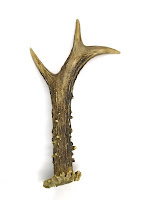Written by NAMC blog contest finalist, Rachael Partain.
We are pleased to share this guest submission, the second of three finalists in the NAMC blog contest. We thank Rachael for her participation, and hope you enjoy this activity created for the Montessori Preschool/Kindergarten classroom.
As a pre-service Montessori teacher, I have practiced in a variety of non-Montessori schools, most recently with a local Head Start Program. It is often a challenge to incorporate the Montessori method while still meeting my lesson planning requirements, and the appropriate state standards.
The activity below combines a Montessori lesson plan that I designed with the components required by public education institutes. It touches on a variety of cross-curricular standards. I hope you enjoy this lesson and I hope that it gives you ideas for meeting your state or national standards while allowing you to apply your knowledge of the Montessori method.
Montessori Zoology Activity for the Early Childhood Classroom: Where the Wild Things Are
Content Area: ScienceAge: 3-6 years
Materials
- Mat
- Sendak, M. (1963). Where the Wild Things Are. United States: Harper Collins Publishers. NOTE: Teacher will have previously read this book to the students.
- Natural, real elements from wild animals, such as:
- Animal horn or antler
- Small sample of animal hair or fur
- Feathers
- Turtle shell
- Snake skin
- Shark teeth
- Bear claw or large bird talon (not too sharp)
- Photographs of the corresponding wild animals
- Magnifying glasses (4)
- Cloth bag (large enough to hold all objects)
- Teacher-prepared control set containing copies of the photographs along with images (can be photographs as well) of each corresponding animal object, so that the students may check their work independently.
- Have all materials for the lesson ready in the cloth bag.
- Invite a small group (no more than four, ideally two) of children to gather around a mat.
- Announce to the children that today they will learn about some characteristics of different wild animals.
- From your bag, remove the book, Where the Wild Things Are.
- Show the children pictures of “Wild Things” from the book. Ask the children, “What are some of the characteristics of these creatures that make them appear wild?”
- The children will likely answer that they have teeth, claws, fur, or some other common characteristic.
- Remove one wild animal object from your bag to correspond with the first characteristic the children mention. After removing the object, ask the children what the object is and from what kind of real animal they think that it came.
- Continue until at least three objects have been removed from your bag. If necessary, ask questions to guide the children to appropriate answers.
- Next, show the children the animal photograph that corresponds to each object. Allow the children to feel and explore each object closely. They may use the magnifying glasses to take a closer look at each object.
- Take out the rest of the natural objects and the rest of the photographs of real wild animals from the bag.
- Put the book, Where the Wild Things Are, back into the bag.
- Place the photos of the real wild animals face up on the mat randomly.
- Explain to the children that they will now learn how to use the new classroom material.
- Challenge the children to match each of the objects to the photo they correspond with.
- Once the children have matched all of the photos, show the students the control set of photos and images of the animal objects. Compare the material with the control set to check that the matching is correct.
- Tell the students that they now know how to use the material for this activity, and that they are free to choose it during their work time.
As much as possible, NAMC’s web blog reflects the Montessori curriculum as provided in its teacher training programs. We realize and respect that Montessori schools are unique and may vary their schedules and offerings in accordance with the needs of their individual communities. We hope that our readers will find our articles useful and inspiring as a contribution to the global Montessori community.
© North American Montessori Center - originally posted in its entirety at Montessori Teacher Training on Thursday, May 21, 2009.
© North American Montessori Center - originally posted in its entirety at Montessori Teacher Training on Thursday, May 21, 2009.




Innovative Activity for preschool child to learn zoology!!
ReplyDelete